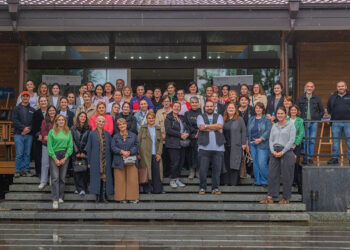Public agencies from Armenia, Georgia and Moldova are one step closer to achieving cross-border electronic authentication from the standpoint of technical compatibility. The three countries have successfully tested connecting to foreign electronic services using their national electronic IDs (eIDs) as part of EU4Digital’s cross-border electronic identification (eID) pilot activities between the Eastern Partner countries.
The software – called an eIDAS-Node – currently enables European Union Member States to communicate with their counterparts in a centralized or distributed fashion for cross-border authentication. The EU’s updated EUDI regulation, previously known as the eIDAS regulation, facilitates secure cross-border transactions and aims to promote seamless digital services within the EU.
During the cross-border eID pilot, testing was successfully completed by the following country pairs: Armenia and Georgia, Armenia and Moldova, and Georgia and Moldova. The pilot program emulates the EU’s model but has been modified for local needs and capabilities.
Representatives from the Eastern partner countries have shared their experience and its value for their future plans.
“Having EU aspirations, when e-Government Agency of Moldova implemented back in 2012 the first version of MPass – our single sign-on service integrating various authentication means, we have chosen the European authentication standard used back then by European Project STORK, namely SAML v2,” said Artur Reaboi, Chief Enterprise Architect, Moldova e-Government Agency. “This resulted in some minor changes to Mpass to transform it to a real eIDAS node for authentication, which we successfully tested with Estonian, Armenian, and Georgian eIDAS nodes during the pilot project. Now we can clearly state that the technical side of European Union integration for electronic authentication is ready. Big thanks to EU4Digital Team for guiding us!”
In January 2023, EU4Digital initiated the second phase of a project to establish secure, mutually recognized electronic identification across the Eastern Partnership (EaP) and the EU.
EKENG, Armenia’s sole accredited identity provider and operator of the popular Unified Portal for Online Requests, with pivotal guidance by the EY team, successfully led the project from Armenia’s side. Throughout the project, participating countries cooperated efficiently, sharing knowledge and experience with each other. This marks a promising start to broader efforts aimed at harmonizing digital markets within the EaP and with the EU.
While the eID pilot program allows Eastern partner countries to test their technical interoperability, the EU4Digital eTrust stream is also working closely with EaP countries to develop a harmonized approach for mutual trust and recognition of not only eIDs but also trust services. For this purpose, EU4Digital has developed an eTrust and eID conceptual framework for applying EU eTrust practices in the context of the Eastern partner countries. This framework consists of:
• a comparison of local legislation with the 2014 eIDAS regulation;
• evaluating the level of assurance provided by given eID, a process which establishes the degree of certainty a service provider can have concerning the user’s identity;
• mutual recognition agreements between Eastern partner countries.
In the digital age, eID and eTrust services must be recognized within and reach beyond national borders. EU4Digital supports Eastern partner countries in their goal to unify cross-border access to digital services. By developing eTrust and cross-border services in the digital economy, by making them safer, faster and cheaper, EU support through EU4Digital facilitates electronic transactions for businesses and citizens, resulting in a stronger, more dynamic economy and increased consumer trust.
Armenia, Georgia and Moldova Aligning eTrust and eID Standards
Recommended
Highlights
Trending
Experience Seamless Connectivity with Silknet eSIM in Georgia
Why Silknet's eSIM could be your top choice in Georgia Since its introduction, eSIM technology has become...














